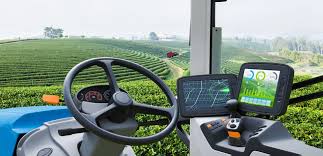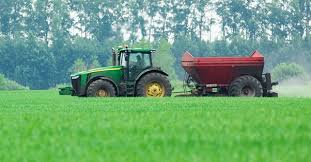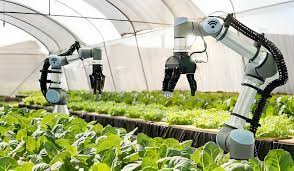Precision agriculture, also known as precision farming, is a modern approach to agriculture that utilizes advanced technologies to optimize crop production. By leveraging various tools and techniques, precision agriculture aims to increase efficiency, reduce resource usage, and improve overall crop yield. This method has transformed traditional farming practices, making them more data-driven and adaptable to the specific needs of individual fields.
Key technologies used in precision agriculture include Global Positioning System (GPS), remote sensing, Geographic Information Systems (GIS), and Variable Rate Technology (VRT). GPS provides real-time location data, allowing farmers to track and manage equipment precisely. This precision helps in mapping fields, monitoring crop conditions, and planning planting and harvesting operations with greater accuracy.
Remote sensing, on the other hand, involves using satellites and drones to capture aerial images and monitor crop health. These images can detect issues like pest infestations, nutrient deficiencies, and water stress, enabling farmers to take corrective actions quickly.
GIS technology is essential in precision agriculture for analyzing spatial data. By layering data such as soil composition, topography, and crop yield history, GIS enables farmers to understand field variability and make informed decisions.
Additionally, Variable Rate Technology allows for the precise application of inputs like seeds, fertilizers, and pesticides. VRT ensures that resources are distributed based on field requirements, reducing waste and lowering costs.
Together, these technologies enable farmers to implement site-specific management practices that maximize productivity while minimizing environmental impact. As precision agriculture continues to advance, it holds the potential to meet growing food demands sustainably, address environmental challenges, and support global food security.
The integration of data analytics, artificial intelligence, and machine learning further enhances the capabilities of precision agriculture, making it a vital component of modern farming.
GPS and GNSS Technologies

Global Positioning System (GPS) and Global Navigation Satellite System (GNSS) technologies are essential components of precision agriculture. They provide accurate location data that farmers can use to make informed decisions.
1. Field Mapping: GPS technology allows farmers to create detailed maps of their fields, highlighting variations in soil type, moisture levels, and crop health. These maps help in planning and executing farming practices more effectively.
2. Navigation: GNSS systems enable precise navigation of agricultural machinery, ensuring accurate planting, fertilizing, and harvesting. This reduces overlaps and gaps, improving efficiency and reducing costs.
3. Data Collection: GPS-enabled devices collect real-time data about field conditions, which farmers can analyze to make better decisions. This data-driven approach enhances resource management and crop productivity.
Remote Sensing and Drones
Remote sensing involves using satellites or aerial imagery to gather information about crops and soil from a distance. Drones have become an integral part of this technology, providing high-resolution images and data.
1. Crop Health Monitoring: Drones equipped with cameras and sensors can assess crop health by capturing images in various wavelengths. This information helps farmers identify stressed areas and make timely interventions.
2. Field Surveys: Drones can quickly survey large fields, providing farmers with detailed insights into crop growth, nutrient deficiencies, and pest infestations. This allows for targeted management practices.
3. Precision Spraying: Drones can also be used for precision spraying of fertilizers and pesticides, reducing chemical use and minimizing environmental impact. This targeted application enhances crop health and sustainability.
Soil and Crop Sensors
Soil and crop sensors are vital tools in precision agriculture, providing real-time data on soil conditions and crop status.
1. Soil Moisture Sensors: These sensors measure soil moisture levels, helping farmers determine when and how much to irrigate. This ensures efficient water use and promotes healthy crop growth.
2. Nutrient Sensors: Sensors can detect nutrient levels in the soil, allowing farmers to apply fertilizers based on specific crop needs. This targeted approach reduces waste and enhances soil health.
3. Crop Monitoring Sensors: Crop sensors assess plant health by measuring parameters like chlorophyll levels and photosynthesis rates. This information enables farmers to make timely decisions regarding irrigation, fertilization, and pest management.
Read Also: Agricultural Tillage Practices
Variable Rate Technology (VRT)

Variable Rate Technology (VRT) is a key component of precision agriculture that allows farmers to apply inputs at variable rates based on specific field conditions.
1. Tailored Inputs: VRT enables farmers to customize the amount of fertilizers, pesticides, and water applied to different parts of a field. This ensures that crops receive the right amount of resources for optimal growth.
2. Cost Efficiency: By using VRT, farmers can reduce input costs and minimize waste. Applying inputs only where needed improves resource efficiency and sustainability.
3. Yield Improvement: VRT contributes to higher yields by ensuring that crops receive adequate nutrients and water. This tailored approach leads to healthier plants and increased productivity.
Farm Management Software
Farm management software (FMS) plays a crucial role in precision agriculture by helping farmers organize and analyze data related to their operations.
1. Data Organization: FMS allows farmers to centralize information about crops, fields, equipment, and inputs. This organized data is essential for effective decision-making and resource allocation.
2. Financial Management: Farmers can track expenses, revenues, and profitability using FMS. This financial oversight helps optimize budgeting and investment in agricultural practices.
3. Planning and Forecasting: FMS provides tools for planning crop rotations, scheduling planting and harvesting, and forecasting yields. This enables farmers to make proactive decisions that enhance productivity.
Internet of Things (IoT) in Agriculture
The Internet of Things (IoT) refers to a network of interconnected devices that communicate and exchange data. In agriculture, IoT technology enhances precision farming by providing real-time insights.
1. Smart Sensors: IoT-enabled sensors can monitor soil moisture, temperature, and nutrient levels. This data helps farmers make timely decisions about irrigation, fertilization, and pest management.
2. Remote Monitoring: Farmers can remotely monitor field conditions and equipment using IoT devices. This capability enables quicker responses to issues and reduces downtime for machinery.
3. Livestock Management: IoT technology can also be applied in livestock farming, tracking animal health, location, and feeding patterns. This information helps improve animal welfare and productivity.
Data Analytics and Big Data
Data analytics involves analyzing large datasets to extract meaningful insights, and it is essential in precision agriculture.
1. Predictive Analytics: Farmers can use data analytics to predict crop yields, disease outbreaks, and market trends. This foresight enables better planning and risk management.
2. Performance Monitoring: Analyzing historical data helps farmers assess the performance of different crops, varieties, and practices. This knowledge informs future decisions and improvements.
3. Environmental Impact Assessment: Data analytics can evaluate the environmental impact of farming practices, allowing farmers to identify areas for improvement and implement sustainable practices.
Read Also: Maggot Feeding: Can You Feed Fishes with Maggots?
Automated Machinery and Robotics

Automated machinery and robotics are transforming farming by increasing efficiency and reducing labor costs.
1. Precision Planting: Automated planters can precisely place seeds at the optimal depth and spacing, ensuring better germination and crop uniformity. This technology maximizes yield potential.
2. Autonomous Tractors: Robotic tractors equipped with GPS and sensors can perform tasks like tilling, planting, and harvesting with minimal human intervention. This automation improves efficiency and reduces labor reliance.
3. Harvesting Robots: Harvesting robots are designed to pick fruits and vegetables without damaging crops. This technology ensures timely harvesting and reduces post-harvest losses.
Precision agriculture is revolutionizing the farming industry, driven by technologies such as farm management software, IoT, data analytics, and automation.
By adopting these innovations, farmers can enhance productivity, reduce costs, and promote sustainable practices.
As precision agriculture continues to evolve, it holds the potential to address the challenges of global food security while minimizing environmental impact.
Embracing these advancements enables farmers to optimize their operations and contribute to a more sustainable agricultural future.
Do you have any questions, suggestions, or contributions? If so, please feel free to use the comment box below to share your thoughts. We also encourage you to kindly share this information with others who might benefit from it. Since we can’t reach everyone at once, we truly appreciate your help in spreading the word. Thank you so much for your support and for sharing!
Read Also: Measurement and Definition of the term water yield






